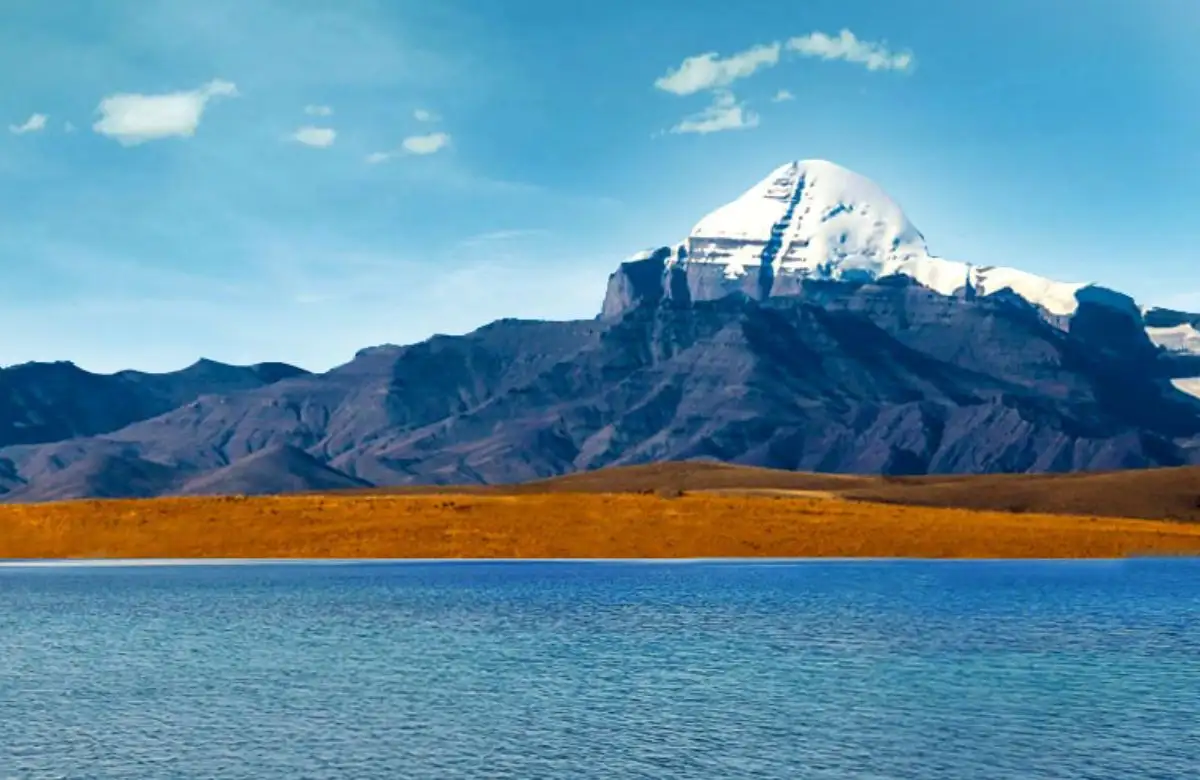The Four Faces of Holy Mount Kailash: A Journey of Spiritual Significance

Get in touch with our Staff members and get discounted offers for your trip.


Soaring majestically to an impressive height of 22,000 feet, Mount Kailash holds immense reverence across multiple religions worldwide. This sacred mountain, believed to be the abode of Lord Shiva, occupies a special place in the hearts of its visitors. Devotees from Hinduism, Jainism, Buddhism, and the ancient Bon religion regard Mount Kailash as a center of spiritual significance, with each religion weaving its own mythology and stories around this divine peak.
During the holy Kailash Mansarovar Yatra, pilgrims undertake the journey of a lifetime, experiencing the breathtaking beauty of all four faces of Mount Kailash—South, North, East, and West. Each face carries its own unique charm and spiritual meaning, drawing thousands of devotees every year. Let’s explore each of these faces in detail.
The South Face of Mount Kailash is often regarded as the most beautiful and awe-inspiring side of the mountain. As pilgrims progress along their trek, the grandeur of the South Face gradually reveals itself, with each step offering an even more spectacular view.
Visible from Yam Dwar: The South Face becomes visible right from Yam Dwar, the gateway to the sacred Parikrama. It is an arresting sight that continues to captivate pilgrims throughout the journey around Lake Mansarovar.
The Spine of Lord Shiva: One of the most profound features of this face is the long vertical line that runs down its surface, resembling a spine. Devotees believe that this symbolizes the spine of Lord Shiva himself. During the summer months, when the snow melts, the spine-like line channels the flow of snow towards the sacred Atmalingam.
Divine Communication: The South Face of Mount Kailash is so ethereal that many pilgrims feel as if the mountain is communicating with them, reflecting its divine nature and connection with Lord Shiva.
The North Face of Mount Kailash is equally revered and is often the most visually striking aspect of the mountain. Many consider it to be the most spiritually significant side, offering a deep sense of connection with the divine.
Seen en route to Dirapuk: As pilgrims journey toward Dirapuk, the North Face gradually emerges, providing a breathtaking view. This face is especially visible during the challenging yet rewarding Charan Sparsh (touching the feet of Kailash), which is a profound spiritual experience for many.
Golden Kailash: During the early morning hours, the sun's rays cast a golden hue on the North Face, giving it the name Golden Kailash. The radiant sunlight creates an almost magical atmosphere, with the mountain appearing to glow with divine energy.
Majestic Views: As you move closer, the North Face appears even more gigantic and imposing. The clarity and grandeur of this face are awe-inspiring, and many pilgrims take the opportunity to sit in meditation, chant the Shiva mantra, and immerse themselves in the spiritual energy of this sacred site.
The East Face of Mount Kailash reveals itself during the Inner Kora, the more challenging and spiritually significant circumambulation of the mountain. This face is considered especially important in certain religious traditions, and its appearance is tied to specific spiritual milestones along the trek.
Seen after Gauri Kund: The Eastern Face is visible for a short distance after reaching Gauri Kund, a sacred lake associated with the goddess Parvati. However, the view gradually diminishes as other mountain ranges begin to take over the landscape.
Inner Kora Highlights: The Inner Kora is a 34 km trek that circles the foothills of Mount Kailash. Along the way, pilgrims encounter sacred landmarks such as the Atmalingam, Saptrishi Caves, and Nandi Parvat. The East Face remains visible until the highest point of the trek, the Dolma La Pass, after which the view starts to fade.
The West Face of Mount Kailash is often the first face that pilgrims encounter at the beginning of their Kailash Mansarovar Trek. This side of the mountain, while less elaborate than the North and South Faces, holds its own mystical significance.
Visible from Yam Dwar: Pilgrims catch their first glimpse of the West Face when they start their trek from Yam Dwar. The view of this face remains prominent until the trail progresses, after which the East Face begins to dominate the landscape.
A Hidden Face: Many devotees believe that the contours of the West Face resemble a large human face, gazing down on the devotees. Some describe having vivid spiritual experiences just by meditating on this hidden face, further elevating the sacred nature of the mountain.
Mount Kailash, with its four distinct faces, is a true marvel of nature and spirituality. Each face holds deep significance, both religiously and aesthetically, and offers a different glimpse of the divine for pilgrims making the sacred journey. For devotees of Lord Shiva, the mountain represents his eternal presence, while for others, it is a beacon of spiritual purity and enlightenment.
Sacred to Four Religions: The holiness of Mount Kailash is recognized across four major religions—Hinduism, Jainism, Buddhism, and Bon Po—each with its own sacred narratives and beliefs surrounding the mountain.
A Place of Eternal Peace: Many pilgrims who visit Mount Kailash speak of the profound sense of peace and divinity that envelops them during their trek. The beauty of the mountain, combined with its spiritual significance, makes it a place where one can truly connect with the divine.
Mount Kailash is not just a mountain; it is a symbol of divine creation, beauty, and spirituality. Its four faces—South, North, East, and West—each tell a story of reverence and devotion. Whether you seek spiritual fulfillment or simply want to marvel at the majestic beauty of this sacred peak, a pilgrimage to Mount Kailash is an experience that will leave a lasting imprint on your soul.